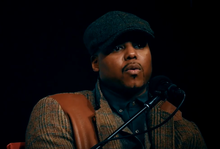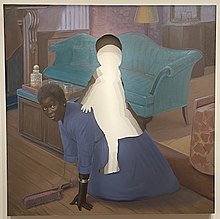Sarah "Sally" Hemings was an enslaved woman with one-quarter African ancestry owned by president of the United States Thomas Jefferson, one of many he inherited from his father-in-law, John Wayles.

Lorenzo Lotto was an Italian painter, draughtsman, and illustrator, traditionally placed in the Venetian school, though much of his career was spent in other north Italian cities. He painted mainly altarpieces, religious subjects and portraits. He was active during the High Renaissance and the first half of the Mannerist period, but his work maintained a generally similar High Renaissance style throughout his career, although his nervous and eccentric posings and distortions represented a transitional stage to the Florentine and Roman Mannerists.

John Trumbull was an American artist of the early independence period, notable for his historical paintings of the American Revolutionary War, of which he was a veteran. He has been called the "Painter of the Revolution".
Graham Vivian Sutherland was a prolific English artist. Notable for his paintings of abstract landscapes and for his portraits of public figures, Sutherland also worked in other media, including printmaking, tapestry and glass design.
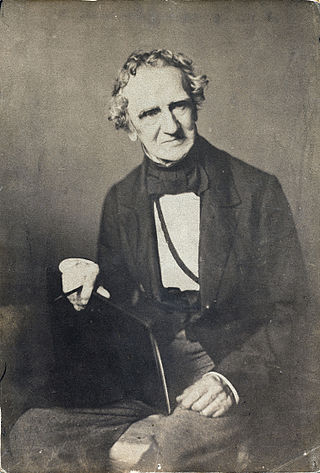
Thomas Sully was an American portrait painter in the United States. Born in Great Britain, he lived most of his life in Philadelphia, Pennsylvania. He painted in the style of Thomas Lawrence. His subjects included national political leaders such as United States presidents: Thomas Jefferson, John Quincy Adams, and Andrew Jackson, Revolutionary War hero General Marquis de Lafayette, and many leading musicians and composers. In addition to portraits of wealthy patrons, he painted landscapes and historical pieces such as the 1819 The Passage of the Delaware. His work was adapted for use on United States coinage.
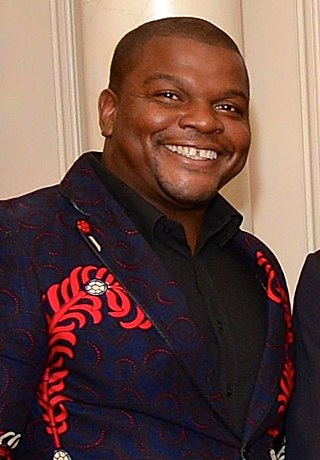
Kehinde Wiley is an American portrait painter based in New York City known for his naturalistic paintings of Black people that reference the work of Old Master paintings. In 2017, Wiley was commissioned to paint former President Barack Obama's portrait for the Smithsonian National Portrait Gallery. The Columbus Museum of Art hosted an exhibition of his work in 2007 and describes his paintings as "heroic portraits which address the image and status of young African-American men in contemporary culture."

Rembrandt Harmenszoon van Rijn, usually simply known as Rembrandt, was a Dutch Golden Age painter, printmaker, and draughtsman. An innovative and prolific master in three media, he is generally considered one of the greatest visual artists in the history of art. It is estimated Rembrandt produced a total of about three hundred paintings, three hundred etchings, and two thousand drawings.

The Williams College Museum of Art (WCMA) is a college-affiliated art museum in Williamstown, Massachusetts. It is located on the Williams College campus, close to the Massachusetts Museum of Contemporary Art and the Clark Art Institute. Its growing collection encompasses more than 14,000 works, with particular strengths in contemporary art, photography, prints, and Indian painting. The museum is free and open to the public.

Washington at Princeton is a 1779 painting by Charles Willson Peale, showing George Washington after the Battle of Princeton. The original was commissioned by the Supreme Executive Council of Pennsylvania for its council chamber in Independence Hall in Philadelphia. Peale made eight copies of the painting. The original, now owned by the Pennsylvania Academy of the Fine Arts, was completed in early 1779, when Washington sat for Peale in Philadelphia.
Barbara Chase-Riboud is an American visual artist and sculptor, bestselling novelist, and award-winning poet.

Anna Bilińska was a Polish painter, known for her portraits. A representative of realism, she spent most of her life in Paris, and is considered the "first internationally known Polish woman artist."

Mary Adshead was an English painter, muralist, illustrator and designer.
Sally Hemings has been represented in the media in popular culture due to her relationship with American Founding Father and president Thomas Jefferson. She has been portrayed in films and the inspiration for novels, plays and music.
Sedrick Ervin Huckaby (1975) is an American artist known for his use of thick, impasto paint to create murals that evoke traditional quilts and his production of large portraits that represent his personal history through images of family members and neighbors.

Family Group in a Landscape is an oil-on-canvas painting by the Dutch Golden Age painter Frans Hals, painted c. 1645-1648, and now in the Museo Thyssen-Bornemisza, in Madrid.
Vincent Valdez is an American artist born in San Antonio, Texas, who focuses on painting, drawing, and printmaking. His artwork often emphasizes themes of social justice, memory, and ignored or under-examined historical narratives. Valdez completed his B.F.A. at the Rhode Island School of Design in 2000. He lives and works in Houston, Texas, and is represented by the David Shelton Gallery (Houston) and Matthew Brown Gallery. Valdez's work has been exhibited at Museum of Fine Arts, Houston, Ford Foundation, Los Angeles County Museum of Art, National Portrait Gallery, Blanton Museum of Art, Parsons School of Design, and the Fundacion Osde Buenos Aires.
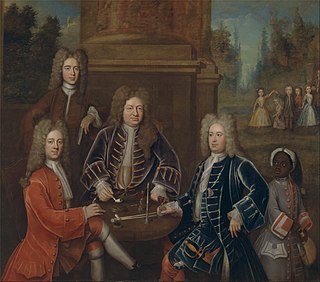
Elihu Yale with Members of his Family and an Enslaved Child is a group portrait of Elihu Yale with William Cavendish and his brother James in England. It is currently in the collection of the Yale Center for British Art. It is attributed to John Verelst and has been dated to 1719.
Vincent Namatjira is an Aboriginal Australian artist living in Indulkana, in the Anangu Pitjantjatjara Yankunytjatjara in South Australia. He has won many art awards, and after being nominated for the Archibald Prize several times, he became the first Aboriginal person to win it in 2020. He is the great-grandson of the Arrente watercolour artist Albert Namatjira.

Brenda Zlamany is an American artist best known for portraiture that combines Old Master technique with a postmodern conceptual approach. She gained attention beginning in the 1990s, when critics such as Artforum's Barry Schwabsky, Donald Kuspit and John Yau identified her among a small group of figurative painters reviving the neglected legacies of portraiture and classical technique by introducing confrontational subject matter, psychological insight and social critique. Her early portraits of well-known male artists, such as Chuck Close and Leon Golub, reversed conventional artist/sitter gender and power dynamics; her later projects upend the traditionally "heroic" nature of portraiture by featuring underrepresented groups and everyday people.

Thomas Amoako Boafo, known as Amoako Boafo, is a Ghanaian painter and visual artist.
